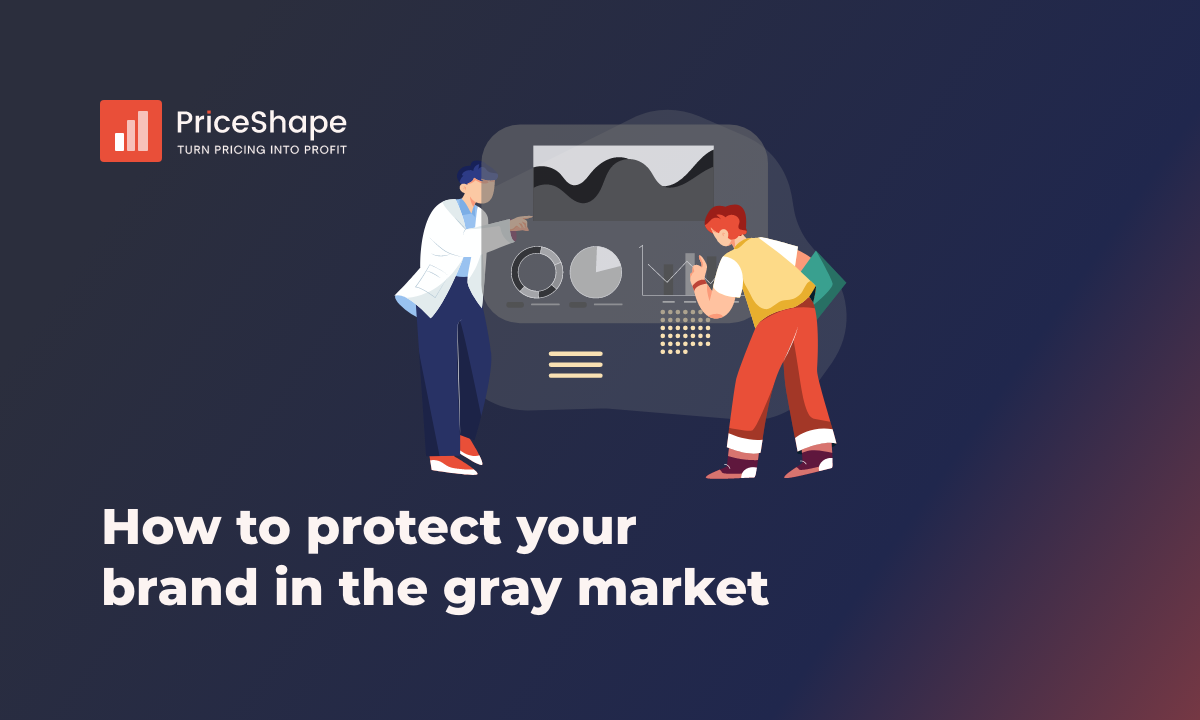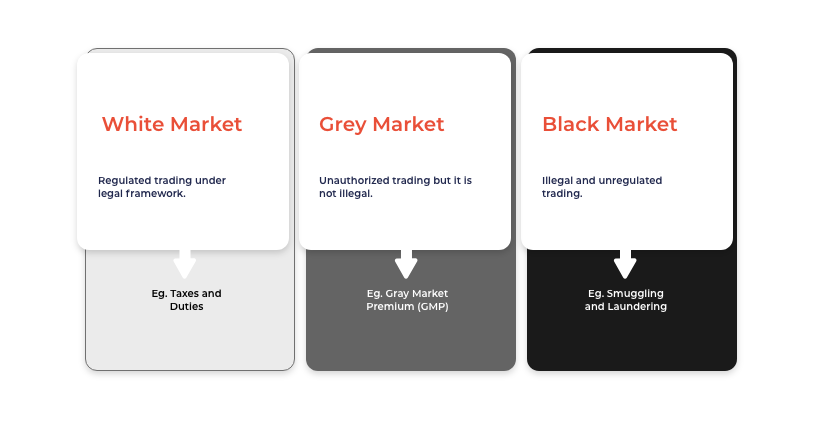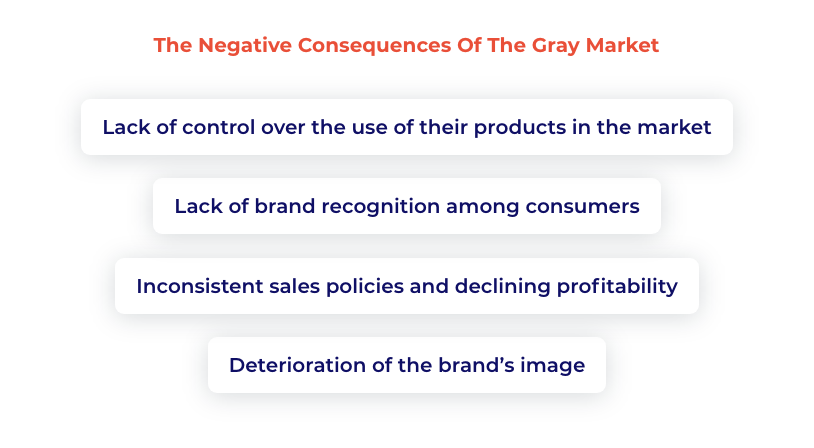How to protect your brand in the gray market
Is Gray the new black, and how does the gray market affect your brand? Learn how to protect your brand with PriceShape - even in a grey market.

There are, by definition, three different trading markets in the world. There is the regular market, the market where companies are authorized and pay taxes, and we, the consumers, buy products daily. Then there is the black market. The black market is illegal, where stolen or illicit products are often sold, and lastly, there is the gray market, which falls between the two mentioned markets. To better understand how a pricing tool can be your ally in protecting your brand, let's dive deeper into the nature of the gray market.’
What is the gray market?
The gray market is the unofficial trade of genuine products through unauthorized distribution channels. Unlike the black market, the gray market deals with legitimate goods but lacks the proper authorization or adherence to established distribution channels. Such activities may involve the sale of products without legal registration to avoid taxes, trading products suspended from the official market, or pre-launch selling of new products. While the gray market operates outside conventional channels, it may not necessarily be illegal.
Numerous consumer goods are commonly traded in the gray market, particularly when significant price differences exist between different countries. These products span a wide range, including popular electronics, luxury cars, designer handbags, clothing, cosmetics, pharmaceuticals, and cigarettes. Unauthorized dealers often import large quantities of these products, offering them substantially lower prices than the local market rates.

The gray market negatively affects the brands of the sold goods, but some products are more vulnerable to the gray market than others. As mentioned above, perfumes and cosmetics are products often largely sold in this unauthorized market. This has large consequences for the brands that pay the price when the products go through this distribution channel. It can hurt your brand identity when your products are traded on the gray market,
- Lack of control over the use of their products in the market.
- Lack of brand recognition among consumers.
- Inconsistent sales policies and declining profitability.
- Deterioration of the brand's image.
Price monitoring: Tracking unauthorized resellers and price fluctuations
In the ever-evolving gray market, businesses must stay vigilant to prevent and identify unauthorized resellers from undercutting their pricing strategy. Price monitoring is crucial in detecting discrepancies, ensuring market stability, and maintaining brand value.
Why price monitoring is essential
Unauthorized resellers often sell products at lower prices than official distributors, disrupting pricing consistency and damaging brand perception. This market manipulation can lead to:
- Revenue loss from price undercutting
- Brand dilution as customers associate the brand with lower-quality service
- Damaged relationships with authorized retailers
Brand dilution as customers associate the brand with lower-quality service
Damaged relationships with authorized retailers
How to track unauthorized resellers and price fluctuations
To effectively monitor the market, brands should implement:
- Automated price monitoring tools
Leveraging a real-time price monitoring solution, such as PriceShape, allows businesses to track unauthorized resellers, price fluctuations, and competitor pricing strategies across multiple platforms. With automated alerts, brands can take quick action when price violations occur. - Identifying gray market sellers
Businesses can detect unauthorized resellers by analyzing pricing trends and sales patterns and tracking how they influence market prices. PriceShape’s analytics dashboard provides detailed insights into price movements, allowing brands to spot potential threats in real-time. - Enforcing MAP policies
Many brands implement Minimum Advertised Price (MAP) policies to prevent price erosion. Using PriceShape, brands can easily monitor compliance and receive notifications when unauthorized sellers violate pricing agreements. - Data-driven decision making
With access to comprehensive pricing data, brands can make informed decisions about price optimization, product distribution, and channel management. PriceShape provides businesses with the tools to track market manipulation trends, ensuring a proactive approach to pricing strategy.
Taking control of your pricing strategy
Effective price monitoring is no longer a manual task—brands can leverage platforms like PriceShape to gain full visibility into the market, protect brand integrity, and make data-driven pricing adjustments. By staying ahead of unauthorized resellers and price fluctuations, companies can safeguard their profitability and market position in an increasingly competitive landscape.

Brand protection: Safeguarding your business against gray market risks
Brand protection is essential in mitigating the risks posed by the gray market, where unauthorized resellers distribute genuine products outside of official channels. This affects a brand’s pricing strategy and can lead to reputation damage, customer confusion, and lost revenue.
To effectively protect your brand, you should implement a combination of legal measures, strategic partnerships, and technological solutions:
- Trademark protection & legal action
Registering your trademark globally and enforcing intellectual property rights can help prevent unauthorized sellers from misusing your brand name. Legal measures such as cease-and-desist letters, MAP (Minimum Advertised Price) policies, and distribution agreements can deter unauthorized sales. - Authorized distributor programs
Establishing a strict distributor program ensures that only verified sellers can offer your products. This includes implementing reseller agreements that outline price controls, region-specific selling rights, and penalties for non-compliance. - Price monitoring & market surveillance
Utilizing price monitoring tools can help detect unauthorized sellers and pricing discrepancies. Regularly tracking market manipulation, discount strategies, and parallel imports can provide valuable insights into potential gray market threats. - Consumer awareness & education
Educating your customers on the risks of purchasing from unauthorized resellers is a proactive way to minimize gray market sales. Clear messaging on official retailer websites, social media, and product packaging can help customers make informed purchasing decisions. - Strategic channel management
Controlling product distribution and limiting supply leakage are key elements in brand protection. By optimizing supply chain transparency and working closely with authorized resellers, brands can reduce the opportunities for gray market infiltration.
By implementing these brand protection strategies, businesses can maintain their brand identity, ensure price consistency, and minimize the financial impact of unauthorized sales in the gray market.
How do you protect your brand?
So, how can you safeguard your brand against the challenges of the gray market? The key lies in gaining comprehensive visibility into the marketplaces and distribution channels through which your products are sold. Manual tracking of such vast market data can be daunting, which is where a sophisticated pricing tool like PriceShape comes into play.
PriceShape's price monitoring software enables you to precisely monitor the sales and pricing of your products across various markets. This lets you identify unauthorized sellers who undercut the recommended prices. Additionally, we provide valuable insights into resellers leveraging marketplaces to flood the market with discounted products, potentially damaging the perceived value of your brand. Our platform collects essential data, including the number of your products in resellers' assortments, stock availability, price differentials compared to the market, and the recommended retail price (RRP) provided to resellers.
Explore how PriceShape can safeguard your brand against the challenges of the gray market.
